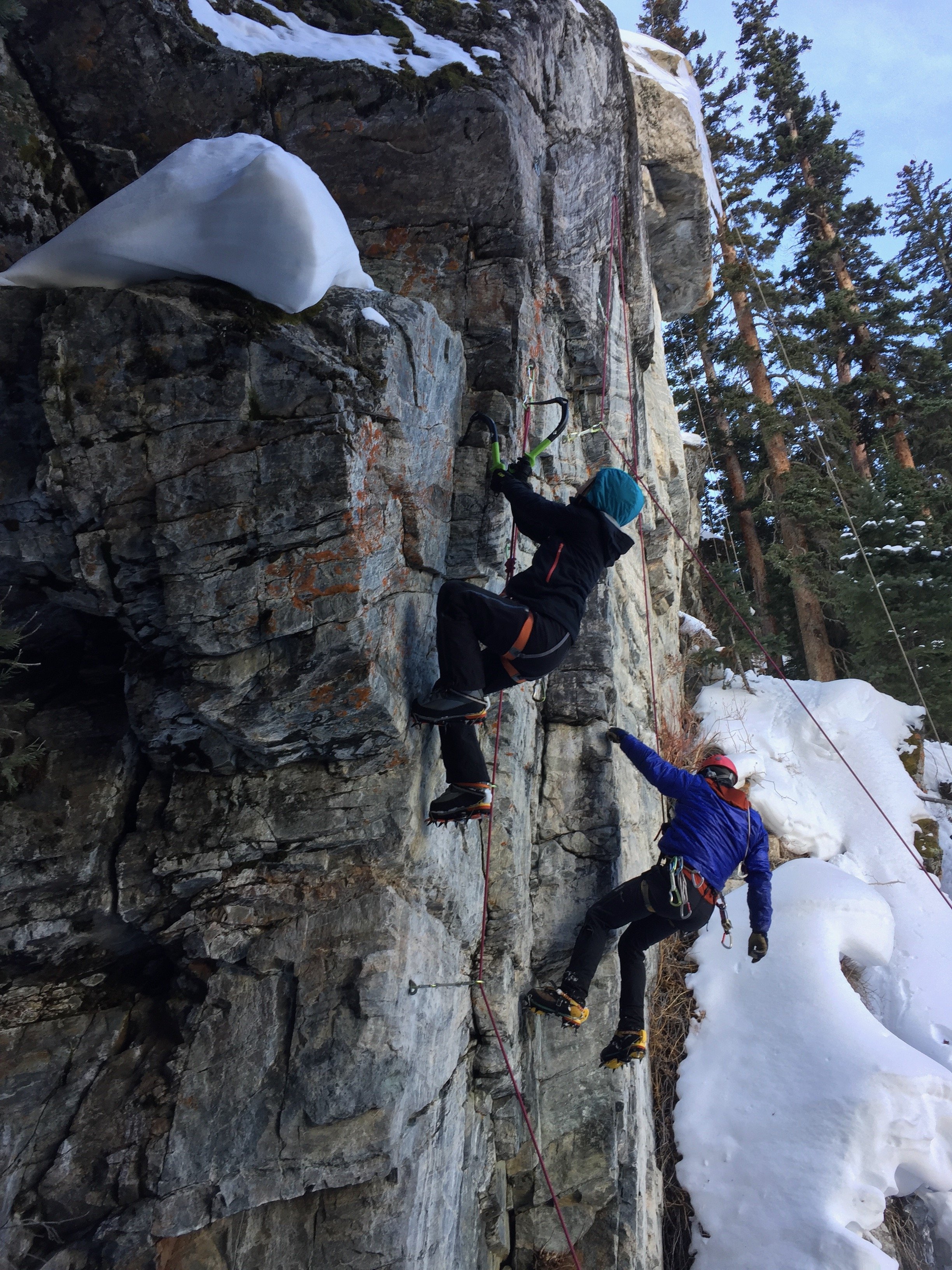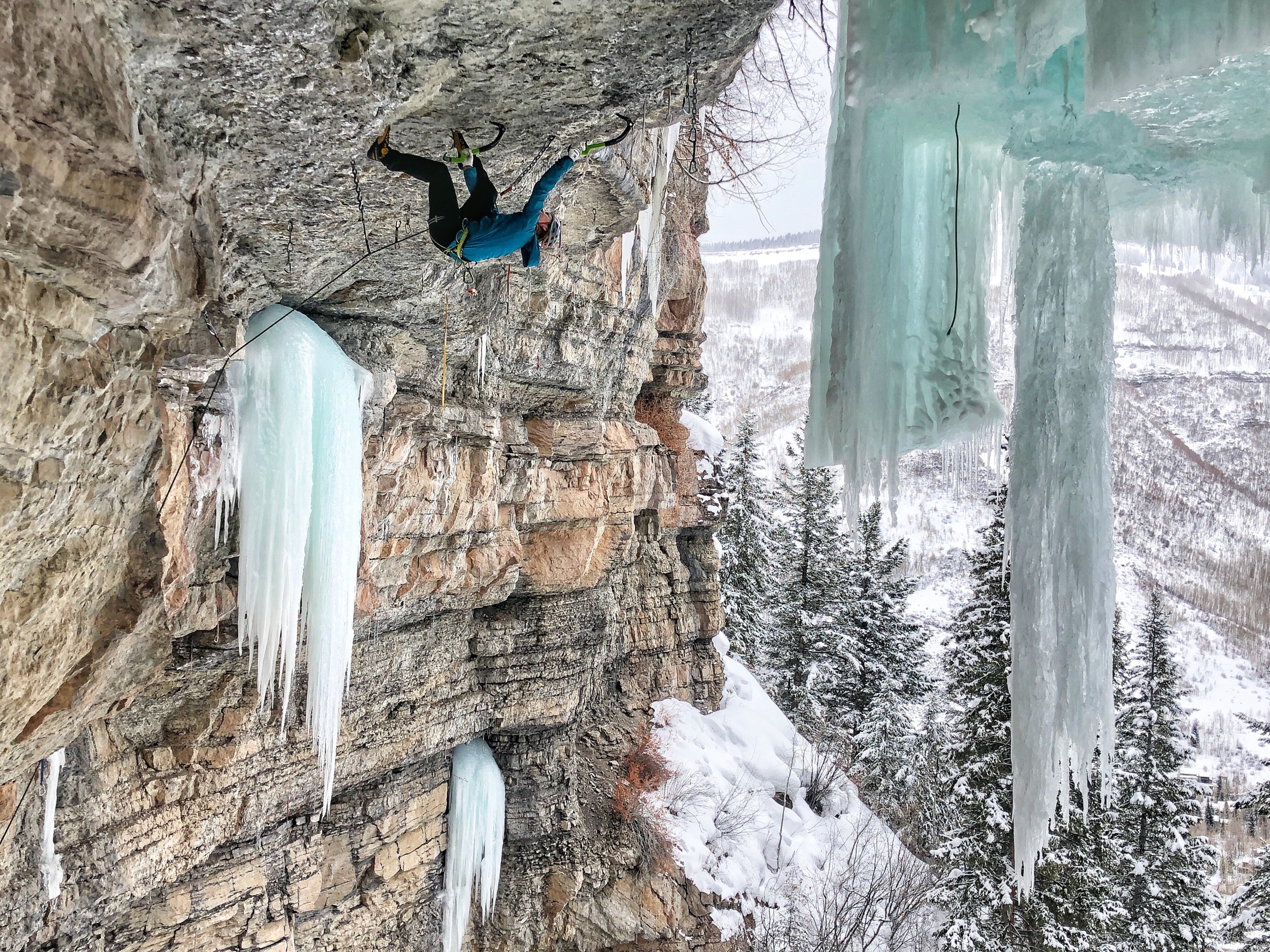
So. What is
Drytooling?
A BRIEF DEFINITION
Drytooling (n.): Climbing with ice axes and crampons when there’s no ice present. It’s a cross between ice climbing and rock climbing—which makes it great training for both!
Outdoors, drytooling takes place mostly on rock walls and big limestone caves. Indoors, it takes place on plywood walls with specialized plastic, metal, and resin holds.
Why does this kind of climbing exist?
Drytooling originated in the mountaineering world. When alpinists went to the high mountains in hopes of reaching new summits, they would typically try to follow as many snow slopes and ice flows as possible. However, it’s not always possible to link ice and snow in a single seamless line to the summit.
Occasionally, sections of dry rock would stand between the climber and the next bit of ice. However, rock climbing these sections wasn’t always possible. After all, when you’re climbing in winter temperatures, it’s usually too cold to wear rock shoes or climb bare-handed. Drytooling, however, allows climbers to connect disparate sections of ice and snow without taking off their winter gear.
Another bonus: crampons and ice picks are incredibly tiny—allowing climbers to ascend narrow seams and tiny foot ledges that fingers and toes would never fit into. As a result, the movement style and applicable terrain differ significantly from rock climbing.
Why is there no ice in
ice-climbing competitions?
Much of the climbing we do here in the Ice Coop is inspired by competition ice climbing. However, “competition ice climbing” is a bit of a misnomer. Occasionally, Ice Climbing World Cup routes feature hanging ice barrels or short ice walls. But the bulk of the climbing takes place on man-made structures.
This has been a slow evolution. When the very first ice-climbing competitions were held (in Russia, more than 100 years ago), they were held on frozen waterfalls and other vertical ice. But vertical ice is usually relatively straightforward to climb, which means it’s not enough of a challenge for high-level competitors. Overhanging ice would be much better, but if you’ve been outdoors much, you know it’s pretty hard to find a waterfall that’s overhanging.
The other problem with competing on pure ice is that the terrain is not very consistent from athlete to athlete. The first climber has to hack out pick placements and foot holds every step of the way. But the following climbers only have to ascend the pre-made holes—easy!
To keep the playing field consistent, increase the level of challenge, and create a true competitive atmosphere, competition organizers realized they had to create specialized structures. Thus, modern overhanging competition walls were born.
Over the past few decades, competition ice climbing has become more advanced. Hanging ice curtains have transformed into wooden cubes and swinging objects. Big plastic holds have given way to highly technical metal ones. And the style of climbing has become more gymnastic, more dynamic—and way more fun.
Scroll the images below to see some shots of our
Ice Coopers in the wild!







